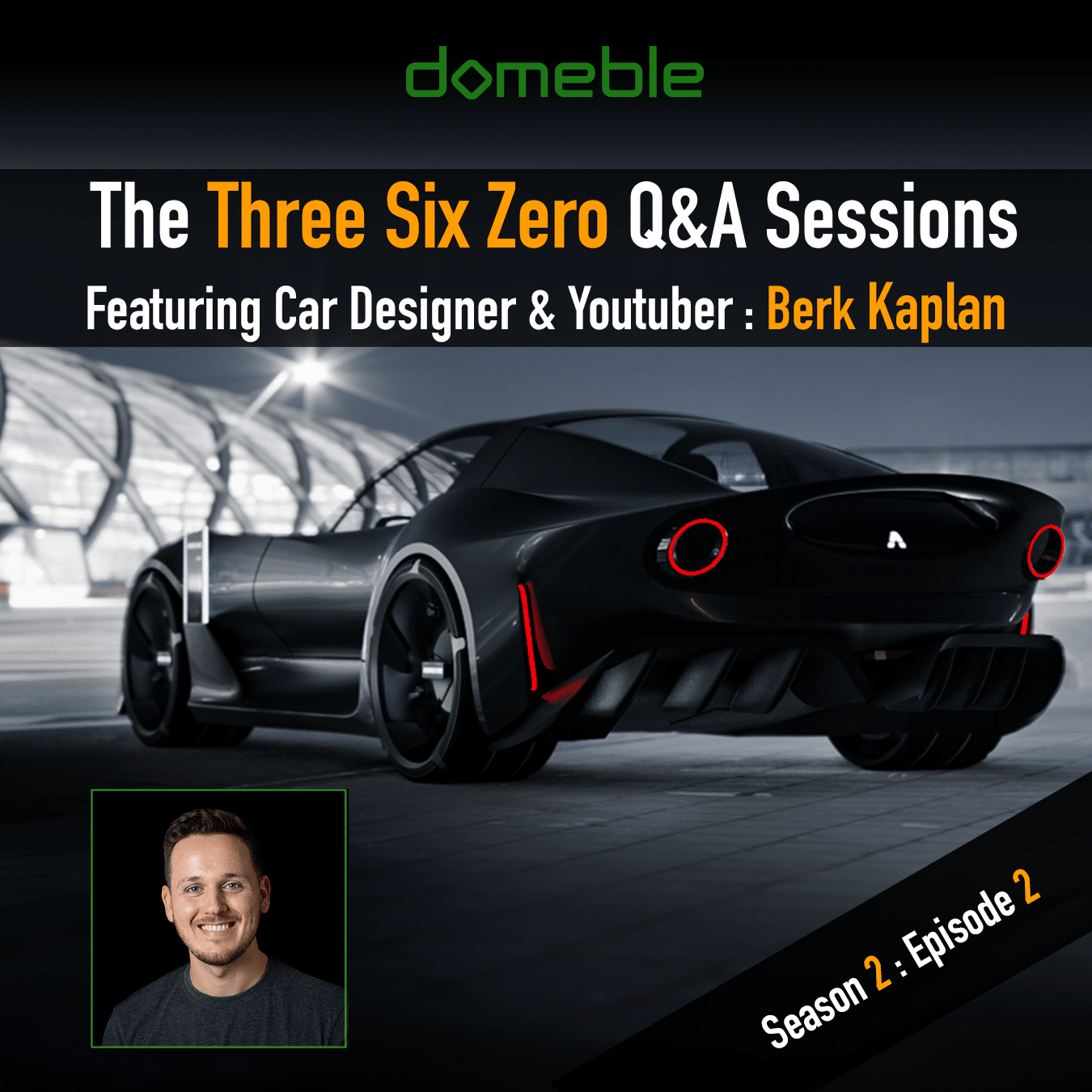1. Tell us a bit about how you got started on your career and your career so far?
I was around 13-14 years old when my brother mentioned car design. Then I started to do research about this field. In Turkey, we don’t have a car design education so I did my bachelors in industrial design. During this period I did my internship at Ford Design Studio in Istanbul. Also participated in many student design competitions and got awarded a scholarship to masters. So I went to Italy for a car design masters in SPD-Milan. As it is a very specific career I was always learning from multiple sources. Writing to professional designers online on any platform, getting feedback to improve my portfolio. This is why today I try to give back to the community through my online courses and Youtube/berkkaplandesigner videos.
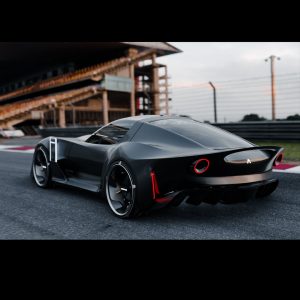
2. What was your route into the industry?
In the last 2 years of my bachelor studies I was also working as part time designer in a construction vehicle company called Hidromek. This was my first real experience working as a designer. I was lucky to experience that while studying. After that I went to Italy for masters and did projects in collaboration with Audi and Lamborghini because SPD had a deal with Volkswagen Group for supporting masters projects. At the end of the program Italdesign offered me an internship which was followed by a full time exterior designer position. After some time I decided to change and have a different experience so I went to Austria – Design Storz. It is a multidisciplinary design studio where I worked on a variety of transportation design projects. I always had my freelance clients through social media as well. When it was the right moment I quit from my job to focus on my freelance projects and social media channels.
3. You are a Blender expert, what do you enjoy about it, and what other flavours of software are part of your workflow?
I used to use Autodesk Alias as a car design student. We were told that it is the software if you want to be a car designer. Then when I became a car designer, I never touched Alias because there was always a professional modeller team who took care of that aspect. So I didn’t even have the opportunity to add it to my professional workflow. Then I realized there is a gap from the design process to the 3D modelling process and I started to search for the most efficient software, then I found Blender 3D. I’m still impressed by its speed and efficiency. I can bring my sketch into 3D in a day or two, I can see realistic materials and reflections even while modelling, I can take renderings and animations out of it. So I don’t even use any other 3D or rendering software anymore. I use pen and paper, then maybe Photoshop and then Blender 3D for developing and finalizing my design proposals. It is getting more and more popular and that’s why I prepared my own online Blender 3D course specific for car design. This way you don’t have to waste months learning other aspects of the software because it has a really wide variety of possibilities. You can see more details of this on my website
4. How do you approach a new project? What is your process?
Well, it depends on the project but I start by researching. Understanding what I want from the project is important at the beginning, otherwise it is easy to get lost during the process. After that I create a direction and start sketching. I don’t wait to refine the idea to start 3D, when I get the spark of idea on sketches, I jump into Blender or Photoshop to develop it further. After rough volumes on Blender, I bring it back to Photoshop, sketch over it to create different proposals. Then the selected one gets developed in Blender. As it is a creative process, it never goes the same way but more or less that’s the direction.
With the VR headsets I think this difference will be lost soon. At the moment there is still a big difference in the feeling of creation. Analog way of working has something unique about it, maybe it is more natural for me still. %90 of my projects I still start with a regular pen and paper. Even if I’m confident with Photoshop or Blender, I like the feeling that I can’t explain by words maybe. However CG for developing a project is a must. You can still be super creative, and actually it can help you to get more creative by randomizing the process. Also for finalizing, the precision and speed together is not comparable to traditional methods. So I think there is a balanced relationship there for the design process.
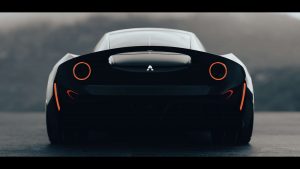
But also sticking to the first idea on the sketch is not ideal. Design process can/should be a bit unknown while creating. If you know the exact final result from the first sketch then you won’t experience the creative process. It is okay to evolve while working CG.
I was involved in some cool projects while working at Italdesign and Design Storz but unfortunately I can’t share details on that. I enjoy not only being a part of a big project but also being a big part of a project. In my freelance work I do from first research until final 3D concept design and seeing that development is a really satisfying process to me. I designed an autonomous robot project called Ottobo, different e-bikes projects and e-boat as well. They all were great to work on. Also the team you work with is super important to enjoy or hate the project haha.
8. What are the biggest challenges you face in your work?
Honestly I enjoy the whole process. The challenge might be the process before the design. Finding the right client and right project is a challenge sometimes. Other than that the design process is beautiful. Other work I do is social media and it has more challenges for sure. Dealing with negative comments and spamming people is difficult.
9. Can you describe a project that required you to overcome a particularly difficult technical challenge?
I focus on the concept phase of design projects mostly. For technical parts and the production phase I always have support from my colleagues and from the client part. I enjoy the creativity side myself, I like to separate these two as different stages. I can’t mention a particular one but I can say every project from concept to production has its own technical challenge. It is important to set the goal right.
After some years of experience for me every project has 2 decision making elements. 1- project itself, if it is something I would like to be part of. 2- the people I will work with, nobody would like to work with unpleasant people right.. When I’m convinced with both aspects, I know it will be a good collaboration.
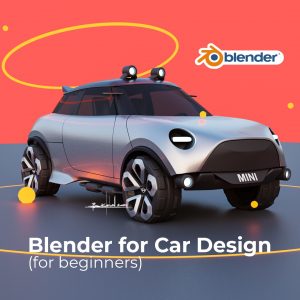
It is a big world there. I wouldn’t jump into it alone because there are many scams and negativity happening. Especially today, it is very confusing for many. But I have a great team who handles the technology and marketing part. So I enjoy designing vehicles for the digital world. We have long term plans on this but at the moment the market slows us down. There is great potential and I’m still excited to work on our project and to see where the NFT world will be.
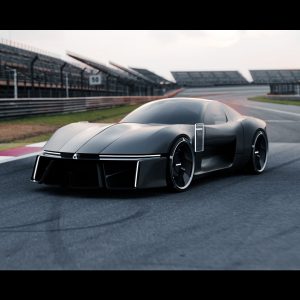
There used to be clay modelling mentioned in every car design process video/interview, unfortunately it kind off started to disappear. Many projects are done without a clay model nowadays. It is possible thanks to the CG developments. It is fast, realistic and efficient. I guess it will just get better and better. It will definitely get more and more common for designers as well. Like I said about Blender, just a couple years ago there was very strict separation between a designer and 3D modeller. Today many designers use 3D tools. As we are talking about the future, AI is getting better fast too. So the combination of AI and current CG use in the automotive industry is inevitable. It is exciting.
I don’t use them myself but I’m well aware of the quality there. For sure they will be heavily used by the automotive industry. Especially after the design proposals are finalised, they can be imported to Unreal/Unity for amazing visuals. However I think for designers, it is not as big a game changer as Blender at the moment.
AI will have more impact on rendering and HDR development I believe. Not only for creating new and non-existing environments but also for the making process. Also just by texting a prompt and getting unique HDR would be cool. Another point is the manual work for using the HDR properly for projects is sometimes too much. I think it will be way easier and automated in future.
15. Do you enjoy working with our Domeble content, and do you appreciate the quality assurance that it delivers?
Yes I love Domeble content! Quality is definitely important and not only for the creator, also for the viewers. There is a feeling when you see a render, in a couple of seconds you already have your emotions about it. With high quality images, you get high quality results. So I’m happy with Domeble.
16. It’s an ever changing world, and an ever changing industry we work in too, what do you think the industry will be like in 5 years time?
I think the tools we use will be smoother for the work process. Also with AI support there will be more variety. It doesn’t mean AI will design everything for us, but at least it will give more options and it means more inspiration. We are already so fast on design processes due to the demand of customers. Maybe even too fast already. Designers would like to take things a bit slower to enjoy the creative process but it doesn’t seem to be slowing down. So hopefully with the development of software’s and AI, we can get some support during this fast creative process. It only excites me to think about possibilities. Because when everybody has access to all types of software or tools, it comes down to the creativity and abilities of the designer to do great projects.
For more information, visit our website
[maxbutton id=”1″ ]










